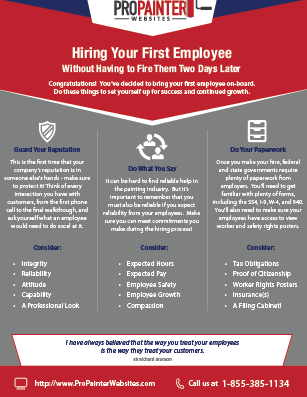Seasonal Factors In Business Outside Painting: Trick Insights You Should Recognize
Seasonal Factors In Business Outside Painting: Trick Insights You Should Recognize
Blog Article
Posted By-Ford Rosendal
When you're preparing a commercial outside painting task, seasonal variables can make or damage your results. You'll want to take into consideration how temperature level and moisture effect paint application and drying out times. Picking the best season can ensure your paint adheres effectively and lasts much longer. However which periods are absolutely the best for this type of job? Allow's discover the crucial elements that can affect your job's success.
The Influence of Temperature Level on Paint Application
When you're intending a business external painting job, the temperature can dramatically affect how well the paint adheres and dries.
Ideally, commercial painter near me wish to repaint when temperatures vary in between 50 ° F and 85 ° F. If it's also cold, the paint might not cure appropriately, causing problems like peeling off or fracturing.
On the other side, if it's too hot, the paint can dry too rapidly, stopping correct attachment and causing an unequal coating.
You ought to additionally take into consideration the time of day; morning or late afternoon offers cooler temperatures, which can be more positive.
Constantly inspect the supplier's recommendations for the particular paint you're using, as they usually supply advice on the excellent temperature level array for optimum results.
Humidity and Its Result on Drying Times
Temperature isn't the only ecological factor that influences your industrial outside paint task; moisture plays a considerable duty as well. High moisture degrees can slow down drying out times substantially, impacting the overall high quality of your paint work.
When the air is saturated with moisture, the paint takes longer to cure, which can cause problems like inadequate attachment and a higher risk of mold growth. If you're painting on an especially humid day, be prepared for extended wait times in between layers.
It's important to check local weather conditions and plan appropriately. Ideally, aim for moisture levels in between 40% and 70% for optimum drying.
Maintaining these factors in mind guarantees your project remains on track and supplies a long-term coating.
Best Seasons for Commercial Exterior Painting Projects
What's the most effective time of year for your commercial exterior paint tasks?
Springtime and very early autumn are generally your best options. Throughout these seasons, temperature levels are light, and moisture degrees are usually lower, producing ideal problems for paint application and drying out.
Avoid summer season's intense heat, which can cause paint to completely dry as well swiftly, causing poor adhesion and coating. Likewise, winter months's cold temperature levels can hinder appropriate drying out and healing, taking the chance of the long life of your paint task.
Go for days with temperature levels between 50 ° F and 85 ° F for ideal outcomes. Remember to examine https://andersonbmweo.yomoblog.com/40966957/uncover-the-important-queries-to-make-before-employing-home-painters-and-disclose-the-techniques-for-boosting-your-home-with-a-fresh-paint-job for rainfall, as wet conditions can wreck your job.
Planning around these elements guarantees your paint job runs smoothly and lasts much longer.
Final thought
In conclusion, preparing your industrial outside painting jobs around seasonal factors to consider can make a considerable difference in the outcome. By organizing job during the ideal temperature levels and moisture degrees, you'll make certain better adhesion and drying out times. Keep in mind to watch on local weather prediction and pick the right time of year-- springtime and very early autumn are your best options. Taking these actions will certainly help you accomplish a long lasting and expert surface that lasts.
